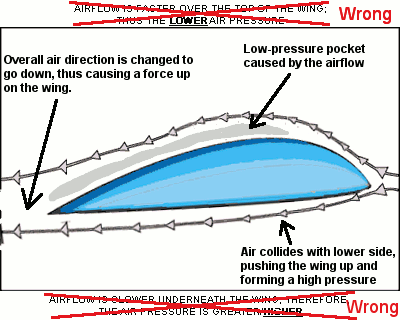

The simplicity of its assumptions, ideally as few as possible.In science, the simplicity of a theory is a hallmark of its elegance. According to Einstein (or Louis Zukofsky or Roger Sessions or William of Ockham… I give up, who knows), “everything should be made as simple as possible, but not simpler.” Hence, the strength of a theory is related to: In fact, the theory that requires the simplest assumptions and least abstraction is typically considered to be the most useful. This is not necessarily because more advanced theories are harder to understand or require a lot maths. Most importantly, the equal transit time theory, explained further below, are taught in many school textbooks and therefore instil faulty intuitions about lift very early on. Just throughout my time in school and university, I have been confronted with several different explanations of how wings create lift. Given its importance to flight, it is surprising how many different and oftentimes wrong explanations are being perpetuated online and in textbooks. Once you tell us more, I can become more specific.How airplanes fly is one one of the most fundamental questions in aerospace engineering. Generally, you look at all requirements and then select or design the airfoil according to the desired pressure distribution at different angles of attack and Mach numbers. What construction technique is used for the wing? Wooden frame and fabric? All metal with countersunk or exposed rivets? To be built on a jig or on a flat table? Composite, in a mold or positive over a foam core? All of them have subtle consequences for airfoil selection.What is the desired stall behaviour? Docile (as preferred for training aircraft) or snappy (as preferred for aerobatic aircraft)?.

If the aircraft is small: What Reynolds number is flown at which lift coefficient?.What is the lowest cruise lift coefficient and the highest lift coefficient for a clean wing and with flaps down? Does your design need flaps at all?.However, if you want to operate your design at high subsonic speeds, thickness needs to be controlled. What is the maximum airfoil thickness you can afford? A thicker airfoil makes for a lighter wing with more internal volume for flaps and fuel.But since there is plenty of literature on them, they are a good start. You need to be more specific with your requirements, and yes, NACA airfoils will most likely not be the best choice. So you know your wing planform and look for the right airfoil.


 0 kommentar(er)
0 kommentar(er)
